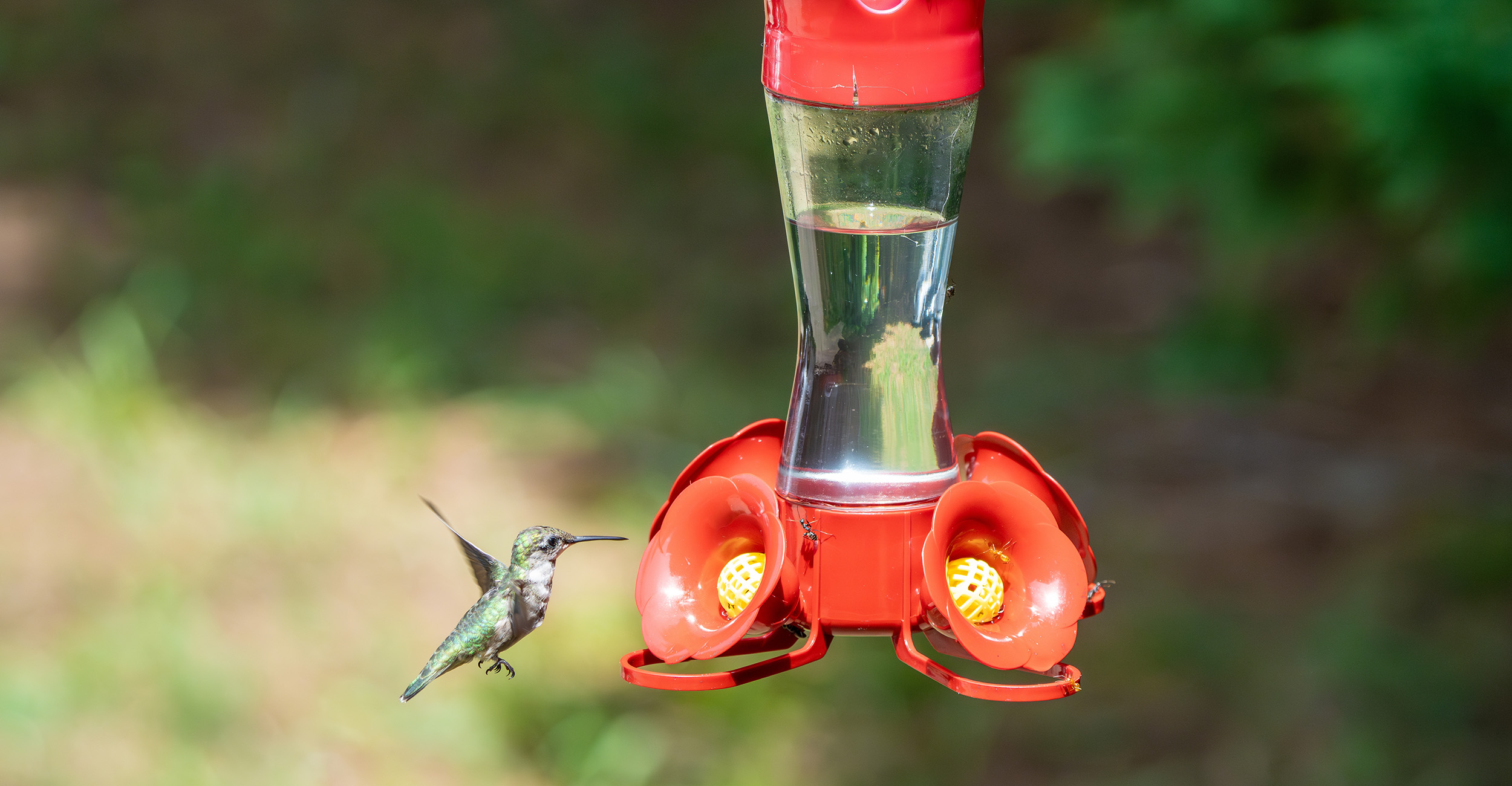
Hummingbirds arriving soon
Thursday, April 11, 2024
Media Contact: Trisha Gedon | Sr. Communications Specialist | 405-744-3625 | trisha.gedon@okstate.edu
Warmer weather means flowers will soon bloom, but it is not only colorful plants and shrubs that will appear in the landscape. Hummingbirds are expected to arrive in Oklahoma at any time.
Hummingbirds are not only fun to watch, but they’re also great pollinators, said David Hillock, Oklahoma State University Extension consumer horticulturist.
“While there are several species of hummingbirds that find their way to the Great Plains every year, the ruby-throated hummingbird is the most common,” he said. “Maintaining a garden with native trees, shrubs and herbaceous plants will create a natural habitat the birds find attractive. They are especially fond of red tubular and trumpet-shaped flowers.”
Bird-friendly plants
Plants such as trumpet vine, trumpet honeysuckle, bee balm and the red cardinal flower are a few good choices. Planting nectar-rich flowers that bloom from spring through fall will help ensure the hummingbirds remain throughout the season. These fast flyers need a constant and diverse supply of flowers to feed on through the fall.
“Native plants not only provide nectar for the hummingbirds, but they also attract insects that are a crucial part of a hummingbird’s diet,” Hillock said. “In addition to plants, water and shelter are two key elements that are essential for the well-being of the hummingbirds. Also, avoid using insecticides in areas where the hummingbirds congregate.”
Those who may not have an outdoor space in which to plant a garden can still enjoy the presence of hummingbirds by hanging feeders, said Tim O’Connell, wildlife ecologist in OSU’s Department of Natural Resource Ecology and Management.
Feeding hummingbirds
“Hummingbirds are migrating from the Yucatan Peninsula, and it takes them 18 hours to make it to the Gulf Coast,” O’Connell said. “They put down about 10 miles in from the coast and, amazingly, they can do this long journey. They don’t glide like other birds. They’re flapping the whole way here, and they’re exhausted. It’s an amazing physiological feat.”
To help replenish their energy and encourage them to hang around for the season, O’Connell suggests placing feeders strategically throughout the landscape.
“Hummingbirds are territorial birds. Even if putting out a feeder with multiple ports, you’ll likely have only one hummingbird at a time. As soon as one starts feeding, another will fly in and try to run off the other,” he said. “Bird enthusiasts should set up several single-port feeders and space them out in the landscape.”
O’Connell also suggests using a feeder that has a wide opening. This makes the feeder easier to fill, and more importantly, easier to clean. If reusing feeders from previous years, make sure they’re clean. Soak them in a bleach/water solution to eliminate any mold from all parts of the feeder. Rinse thoroughly and refill them.
It’s easy to make hummingbird nectar at home with a mixture of four parts water to one part sugar. Mix until the sugar is dissolved. Avoid adding red food coloring to the mixture. The red color of the feeder is enough to attract the hummingbirds. They don’t have an acute sense of smell and rely on eyesight to find food sources.
Extra nectar can be stored in the refrigerator for a couple of weeks, but the feeders need to be cleaned every few days, especially in the heat of the summer.
Hummingbirds are prone to injury due to collisions with windows. To protect the birds, streak the outside of windows with bar soap to break up the reflection. Learn more about the research OSU is conducting on bird/window collisions.
With warmer weather on the way, Hillock said families can get a lot of enjoyment from learning about the various birds in yards, gardens and green spaces.
“Check out a bird book from the library and spend time together as a family observing and learning about the various birds in your landscape,” he said.
OSU Extension offers additional information on attracting birds to the landscape.
